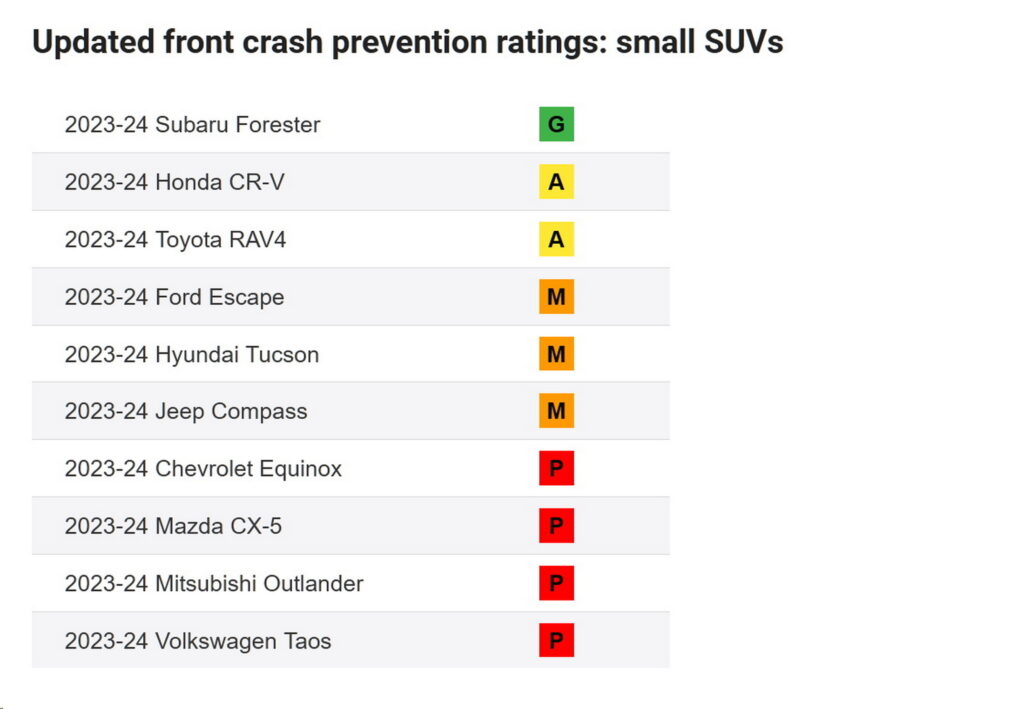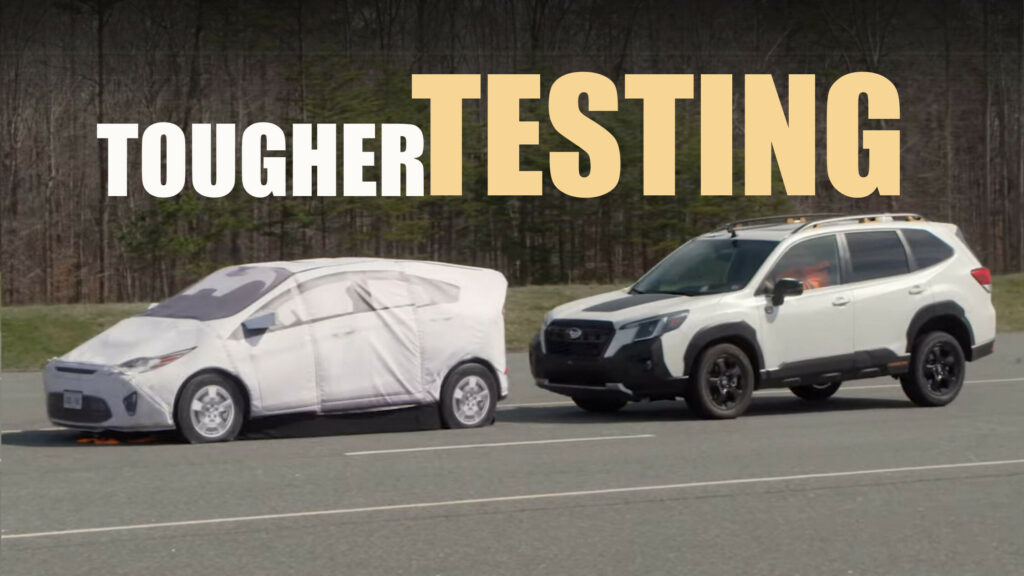- Too many cars were acing the IIHS’s crash prevention evaluation, so it has made the tests tougher.
- Based on real-world data, the safety organization decided to run its tests at higher speeds, and to evaluate crash prevention systems against motorcycles and semi trailers.
- Of 10 SUVs included in the updated test, only the Subaru Forester earned a “good” rating.
The Subaru Forester is the only compact SUV that managed to ace the Insurance Institute for Highway Safety’s (IIHS) new, tougher test of crash prevention technology. The nine other vehicles assessed struggled with the updated evaluation protocol.
However, that doesn’t mean that the poorly performing vehicles’ crash prevention technologies are behind the times. In fact, the automatic emergency braking and collision warning systems in all 10 vehicles involved in this test earned top scores under the IIHS’s old assessment protocol. To make future vehicles safer, the organization is making its tests tougher.
Read: The IIHS Explains Why It Doesn’t Crash Test Vehicles At Higher Speeds
“The vast majority of new vehicles now come with automatic emergency braking, and our research shows the technology prevents as many as half of all front-to-rear crashes. This new, tougher evaluation targets some of the most dangerous front-to-rear crashes that are still happening,” said David Harkey, IIHS President. “This is a vital update to one of our most successful test programs.”
To start, the safety organization decided to run its crash prevention tests at higher speeds. Previously, collision warning and automatic emergency braking systems were assessed at 12 and 25 mph (19 km/h and 40 km/h). Now, the evaluations are being run at 31, 37, and 43 mph (50, 60, and 70 km/h). The tests will also evaluate how crash prevention systems operate when a vehicle is approaching a motorcycle or a semi truck.
“Obviously, crashes that happen at higher speeds are more dangerous,” said David Kidd, the IIHS Senior Research Scientist who led the development of the new evaluation. “Deadly underride crashes often occur when the struck vehicle is a large truck, and motorcyclists are frequently killed when they’re rear-ended by a passenger car, since their bike offers no protection from the impact.”

In a test of 10 small SUVs, the Subaru Forester was the only vehicle to earn a “good” rating, the highest score awarded by the organization. The SUV’s collision warning system alerted drivers to the incoming danger more than 2.1 seconds before the projected time of the crash, and it avoided hitting the motorcycle at 31 and 37 mph. Although the Forester did hit the bike at 43 mph, it slowed by an average of 30 mph before doing so.
The Honda CR-V and Toyota RAV4 earned “acceptable” ratings, while the Ford Escape, Hyundai Tucson, and Jeep Compass received a “marginal” rating. These vehicles fell short because of inconsistent performance in the higher speed tests, and collision warnings that came too late.
Finally, the Chevrolet Equinox, Mazda CX-5, Mitsubishi Outlander, and VW Taos were all rated as “poor.” These vehicles underperformed in a variety of categories, with some warning drivers of a possible collision too late or not at all, while others barely slowed down at all before striking the motorcycle.




